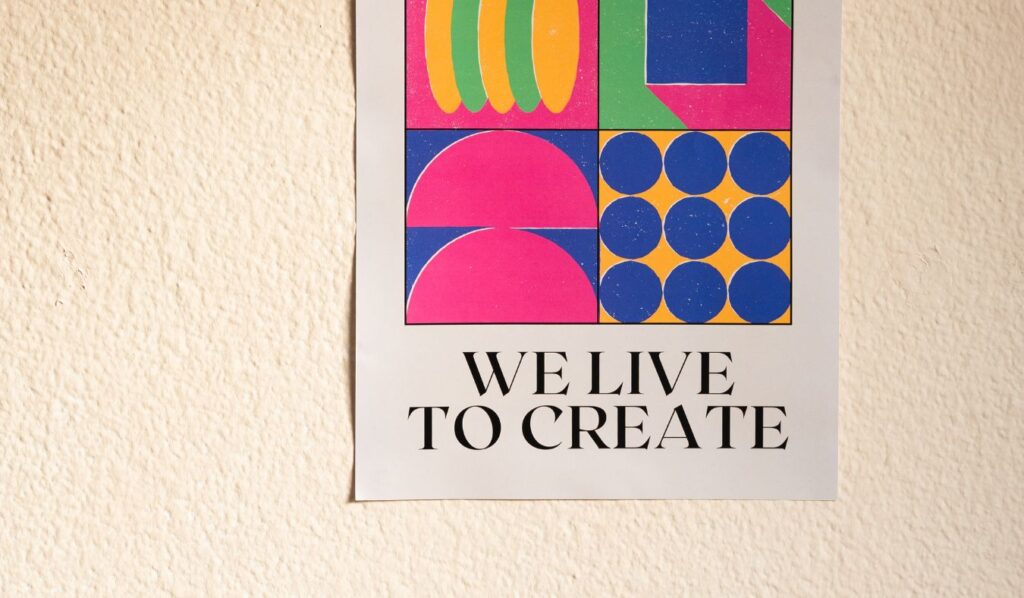Think about the most iconic logos – the Nike swoosh, the Apple apple, the McDonald’s golden arches. You instantly recognize them, even without any text. That’s because Logo Shapes have a primal power to communicate with our brains on a subconscious level.
We process visual information like shapes far faster than we read or decode language. This means your logo’s shape creates a feeling about your brand before a potential customer even knows what you do.
Choosing the right shape isn’t about making your logo “pretty”. It’s about aligning the shape’s inherent psychological associations with your desired brand personality. When done well, it influences how people perceive your trustworthiness, innovativeness, approachability… even before visiting your website!
Let’s dive into the hidden meanings behind common logo shapes and how to harness their power for your brand.
Common Logo Shapes & Their Associations
1. Circles
Signifies Unity, community, wholeness, softness, friendliness, eternity. Ideal for the following types of brands:
- Those emphasizing inclusivity and connection (social networks, support groups),
- Nurturing brands (childcare, holistic health),
- Companies with a global reach (Olympics, international charities)
2. Squares & Rectangles
Signifies Stability, order, strength, efficiency, practicality and security. Ideal for the following types of brands:
- Technology (software, hardware, reliability is key)
- Finance (trustworthiness, managing assets)
- Construction & real estate (solid foundations)
3. Squares & Rectangles
Signifies Power, energy, direction, masculinity, iand innovation. Ideal for the following types of brands:
- Sportswear or gear (performance, competition)
- Cutting-edge technology (forward movement)
- Brands targeting a male-skewing audience (with a modern, not overly macho, aesthetic)
4. Organic Shapes
Signifies Nature, fluidity, approachability, femininity and creativity. Ideal for the following types of brands:
- Wellness & natural products (plant-based, etc.)
- Handmade goods (uniqueness, artistry)
- Creative agencies, design studios (outside the box thinking)
Important Note: These are starting points, not hard and fast rules. Nuances of how a shape is executed (sharp corners vs. rounded, thick vs. thin lines) further influence the perception of the brand.
Logo Shape Combinations
1. Contrasting for Balance
- Opposites Attract: Pairing soft curves with sharp angles in a single logo creates visual interest and reflects a multifaceted brand.
- Examples: A tech company with a circular logo element but angular typography conveys both innovation AND approachability.
- Balance is Key Too much contrast can be jarring. Think dominant shape with subtle accents of the opposite for harmony.
2. Symbol & Shape
- Reinforcement: Enclosing a more illustrative symbol (a mascot, an abstract concept) within a simple shape like a circle or square adds focus and instant recognition.
- Best for: Brands with a distinct symbol that they want to be synonymous with their name over time.
- Hierarchy Matters: Decide if the symbol or the overall shape of the logo is dominant for the right visual emphasis.
3. Negative Space Power
- Intrigue Factor: Shapes cleverly formed by the negative space (the “empty” area around design elements) make a logo memorable.
- Examples: The arrow hidden within the FedEx logo, or animal silhouettes crafted from negative space within a wordmark
- Requires Skill: Well-executed negative space usage is a hallmark of a sophisticated logo and often needs a designer’s expertise.
When to Break the Rules
While understanding classic shape associations is valuable, sometimes breaking the mold makes your brand stand out from the crowd. Consider these situations:
1. Industry Disruptors
If your company is shaking up a traditional, even stuffy industry, an unexpected logo shape signals that you do things differently. Example: A financial planning firm using playful organic shapes instead of the expected squares to emphasize their out-of-the-box approach.
2. Minimal = Impactful
Ultra-simple geometric logos strip away all distraction. This reliance on the pure power of shape is bold. Works Best When: Your brand name itself is highly distinctive or you invest heavily in getting the logo seen everywhere to build recognition.
3. The Logo Is NOT Everything
A brilliant logo with inconsistent execution won’t do its job. Shape is one element in your larger brand identity. Consistency Matters: Colors, fonts, how the logo is used across materials… all of this builds long-term recognition with your audience.
Important: “Rule breaking” should be strategic, not random. You still need to deeply understand your brand personality and target customer in order to subvert expectations successfully!
Using Shape Psychology to Your Advantage
Define Your Brand Personality
- Word Power: Don’t just think about what your business DOES. Write down 3-5 adjectives that describe how you want your brand to be PERCEIVED. Examples: modern, playful, sustainable, bold, calming.
- Shape Match-Up: Refer back to Section 1. Which shapes have associations that closely align with those words you chose? This is your starting point.
Audience Matters
- Age is a Factor: Teens drawn to edgy triangles likely won’t find the comfort of circles appealing. The reverse is also true.
- Lifestyle Alignment: A yoga studio targeting stressed-out professionals might use soft organic shapes for a sense of tranquility. One focused on high-intensity workouts would likely utilize shape in a way that conveys energy and power.
- Don’t Stereotype: Know your IDEAL customer, but avoid blanket assumptions based solely on demographics.
Additional Tips:
- Competitor Analysis: What shapes are common in your industry? How can you stand out OR signal you fit in, depending on your goals?
- Don’t Overthink It: Simple is often better, especially for new businesses. A well-executed logo with one strong shape still beats a muddled complex one.
Getting Started
Logo Shape Quiz: This is a super fun and shareable idea!
- Short & Sweet: 5-10 questions where the user sees a trait word and selects the shape that BEST aligns.
- Give Feedback: Provide brief explanations of why a shape is the right choice to reinforce the learning.



